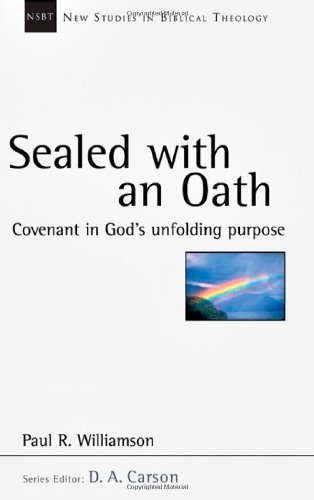A Brief Book Summary from Books At a Glance
About the Author
Paul R. Williamson is Lecturer in Old Testament and Hebrew at Moore Theological College, Sydney, Australia. He is the author of Abraham, Israel and the Nations and a contributor to The Land of Promise, the New Dictionary of Biblical Theology and volumes in the Dictionary of the Old Testament series.
Introduction
In this contribution to the New Studies in Biblical Theology series, Williamson traces a biblical theology of covenant. He exegetes the biblical covenants and shows how the concept of covenant develops throughout the canon until it finds its culmination and fulfillment in the new covenant which is inaugurated in Jesus’ blood. Given the importance of covenant for a proper understanding of the Scriptures and theology, this is an essential subject that requires careful study.
Table of Contents
Chapter 1 Biblical Theology and the Covenant Concept
Chapter 2 Covenant and God’s Universal Purpose
Chapter 3 God’s Universal Covenant with Noah
Chapter 4 God’s Programmatic Covenants with the Patriarchs
Chapter 5 God’s National Covenant with Israel
Chapter 6 God’s Royal Covenant with David
Chapter 7 God’s New Covenant Anticipated by the Prophets
Chapter 8 God’s New Covenant Inaugurated through Jesus
Chapter 9 God’s New Covenant Consummated in the Eschatological Kingdom
Summary
Chapter One: Biblical Theology and the Covenant Concept
There are diverse voices in Scripture but they are all bound up in a perfect unity. As a result, we can trace the concept of covenant across the entire canon. For centuries it has been recognized that covenant is a major theme in Scripture, but its exact role and the interrelationships of the covenants have been debated vigorously. Wellhausen argued that covenant was a late addition to Israel’s relationship with God, and form critics tried to determine when it emerged and how much of the putative covenant history had a kernel of truth in it. In the time following WW1, scholars began to believe for sociological reasons that the idea of covenant must have emerged early in Israel’s history. In the mid-twentieth century the ancient nature of Israel’s covenants was supported by comparing the covenant treaty form of Deuteronomy with Hittite suzerain-vassal covenants. Not everyone was convinced, however, that Israel’s covenant form was not modeled on Assyrian forms. The consensus today in mainstream critical scholarship has come full circle and is once again holding that covenant was a late addition in Israel. Evangelical scholarship and work on covenant has largely been ignored by critical scholars.
Covenant is one of the core themes of Scripture. Scholars disagree on the number of covenants (the cutting of new covenants and covenant renewals) and their relationships to one another. The theological system of covenant theology has posited hypothetical covenants (like the overarching covenant of grace) that are never mentioned explicitly in Scripture. Although covenant should not be cast as the organizing center of the Scripture, following the covenants is a helpful way of organizing the Bible’s plot-line. Covenant terminology is not as frequent in the NT as it is in the OT, but the new covenant is massively important in the NT. Understanding the covenantal era that texts are in is necessary for proper hermeneutics.
There is no exact consensus on the meaning of covenant in the Bible. Etymological studies of the Hebrew term berit have not helped us gain clarity into its meaning. In the OT the covenant language is used of divine-human arrangements, people-people agreements, marriages, and even interior covenants made with oneself. They are elective rather than natural relationships. Oaths were indispensable in the ratification of a covenant, so an essential feature of covenant relations is that they were sealed by an oath. When we look at the divine-human covenants, we can define such a covenant as “a solemn commitment, guaranteeing promises or obligations by one or both parties, sealed with an oath.”
Chapter Two: Covenant and God’s Universal Purpose
The divine-human covenants are central to the Pentateuch and as such are foundational for God’s revelation. The creation account in Genesis is not designed to provide a separate creation doctrine, but to introduce the story. The creation of Adam and Eve in the image of God is the high point of God’s creative work. They are to fill the earth and exercise dominion in a way that reflects the Lord. God places Adam and Eve in the Garden of Eden to tend the ground, and they are to expand the harmonious borders of Eden throughout the earth. Adam and Eve are prototypical priests in the inner sanctuary/garden. It is unlikely that there is a covenant relationship between God and Adam (i.e. an official creation covenant).
Adam and Eve sin and the subsequent chapters of Genesis show the runaway effects of wickedness. In Genesis 3:15 God gives the promise of the protoevangelium. . .
[To continue reading this summary, please see below....]The remainder of this article is premium content. Become a member to continue reading.
Already have an account? Sign In
